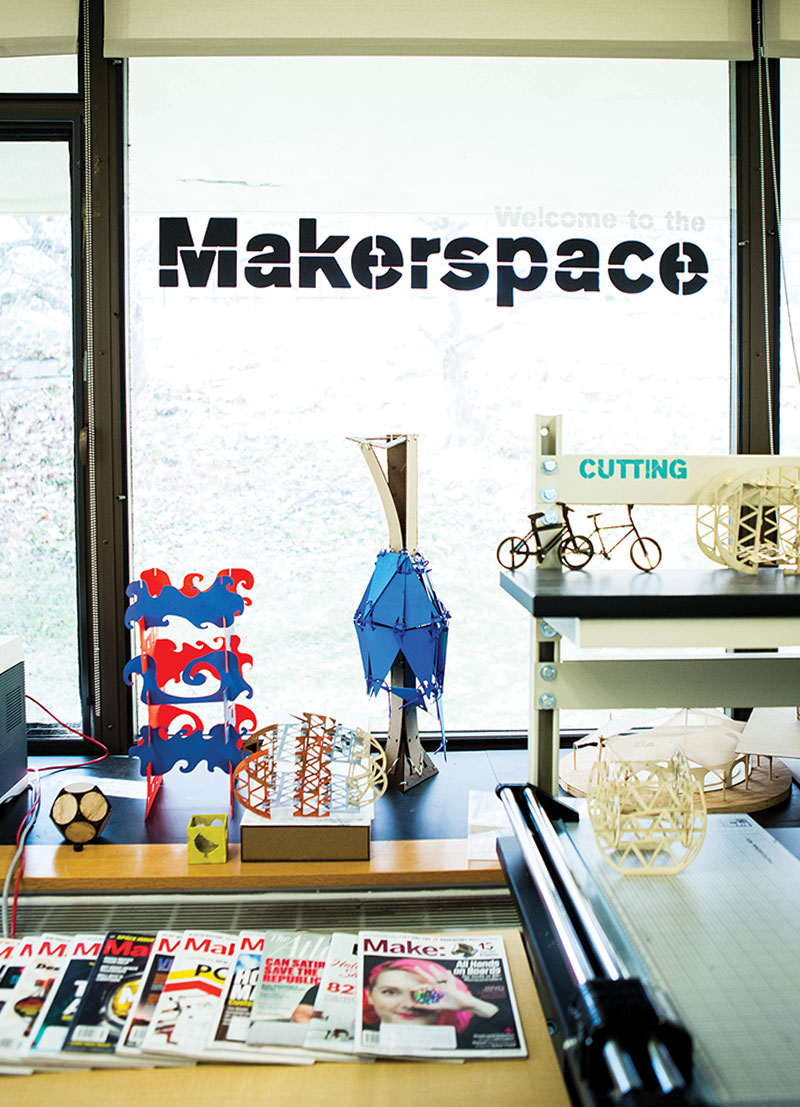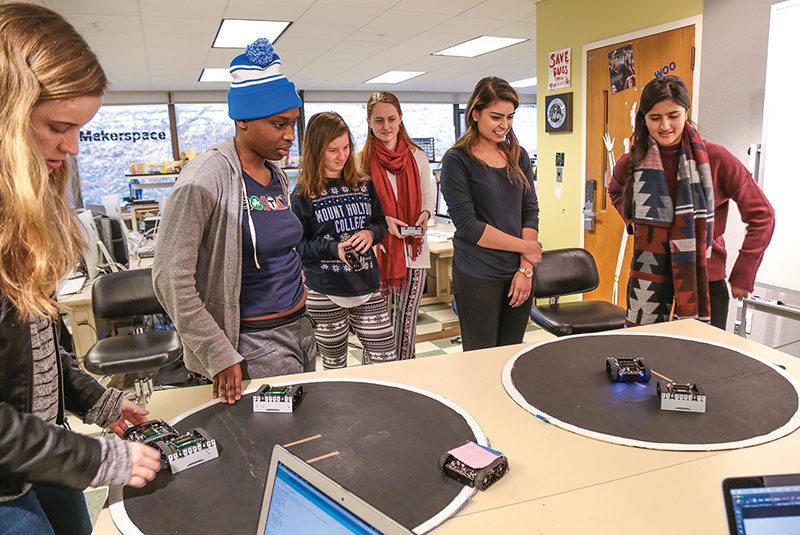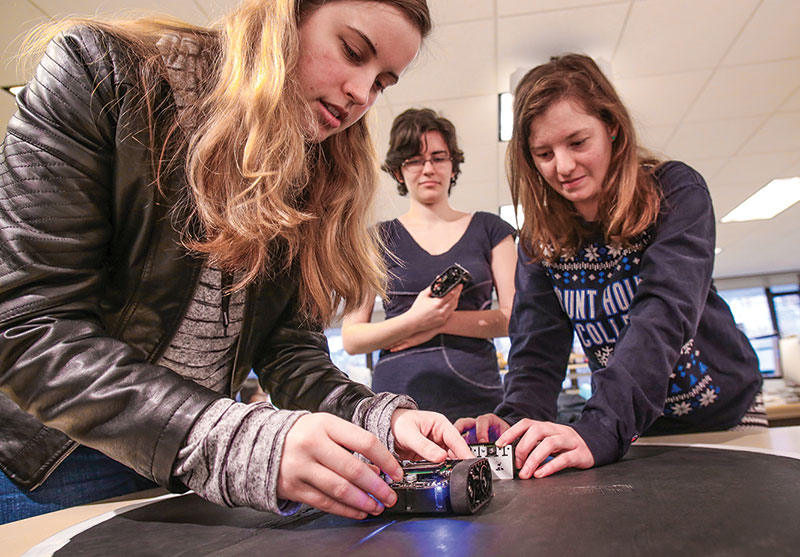Making Space for Discovery
Spring
2018
Interactions - SPS Chapters in Action
Making Space for Discovery
Korena Di Roma Howley, Contributing Editor
While teaching her experimental lab, Mount Holyoke College physics professor and department chair Katherine Aidala noticed something: Many of her students were uncomfortable using basic tools to handle lab equipment, and they often had very little experience working with their hands. “It’s somewhat universal,” Aidala says. “There’s an urban/rural divide, often, [and] there’s certainly a male/female divide.”

One solution? Embrace the maker movement, which has swept campuses, downtowns, and Instagram hashtags [with its marriage of the latest technology and traditional craft.] The movement celebrates open-source learning and independent innovation, and a wide range of skills falls under its umbrella, including coding, woodworking, robotics, circuitry, and sewing. It seems like the logical next step for a society that places high value on both creativity and tech savvy. But for those students who lack hands-on experience, whether with tech or handicrafts, maker know-how might seem like an unattainable ticket to the modern era.
Hoping to both increase STEM literacy and spark interest in it among students at the Massachusetts women’s college, Aidala and her colleagues founded Mount Holyoke’s first makerspace—a term used to describe a collaborative environment in which like-minded makers hash out ideas and bring projects to life, both physically and conceptually. Mount Holyoke’s take (called, appropriately enough, Makerspace) comprises both a physical location and programs that further the broader mission: lowering the barriers of entry to technology by incorporating tech into traditional coursework and encouraging interdisciplinary collaboration. An American foreign policy class, for instance, assembles simple rover drones to simulate a humanitarian aid mission, and art students join a robotics course to create interactive sculpture.
Among the facilities in the physical space are 3-D printers, soldering stations, sewing machines, a vacuum former, and a laser cutter. But more than the technology that’s being used, Aidala says the key is to create a welcoming environment. “It’s about how you provide support for people who don’t have experience” with new technology and hands-on production, she says. At Mount Holyoke, Makerspace’s student workers serve as role models for peers who might otherwise be reluctant to undertake what have traditionally been male-dominated activities.
In addition, extracurricular workshops that are open to everyone—students, faculty, and staff—offer activities such as laser-cutter prototyping and paper modeling that appeal to a range of skill levels. In one popular lab, students discover how physics can help them successfully temper chocolate. They then create original molds using the thermal vacuum former.
According to Aidala, the machines encourage students to become more fluent with technology and help to expose them to new skills, perspectives, and possibly even academic interests. Often, students will walk away with tangible evidence of their journey outside the box. And the hope, she says, is that they’ll soon return. “It’s incredibly empowering to be able to make something from scratch.”//


